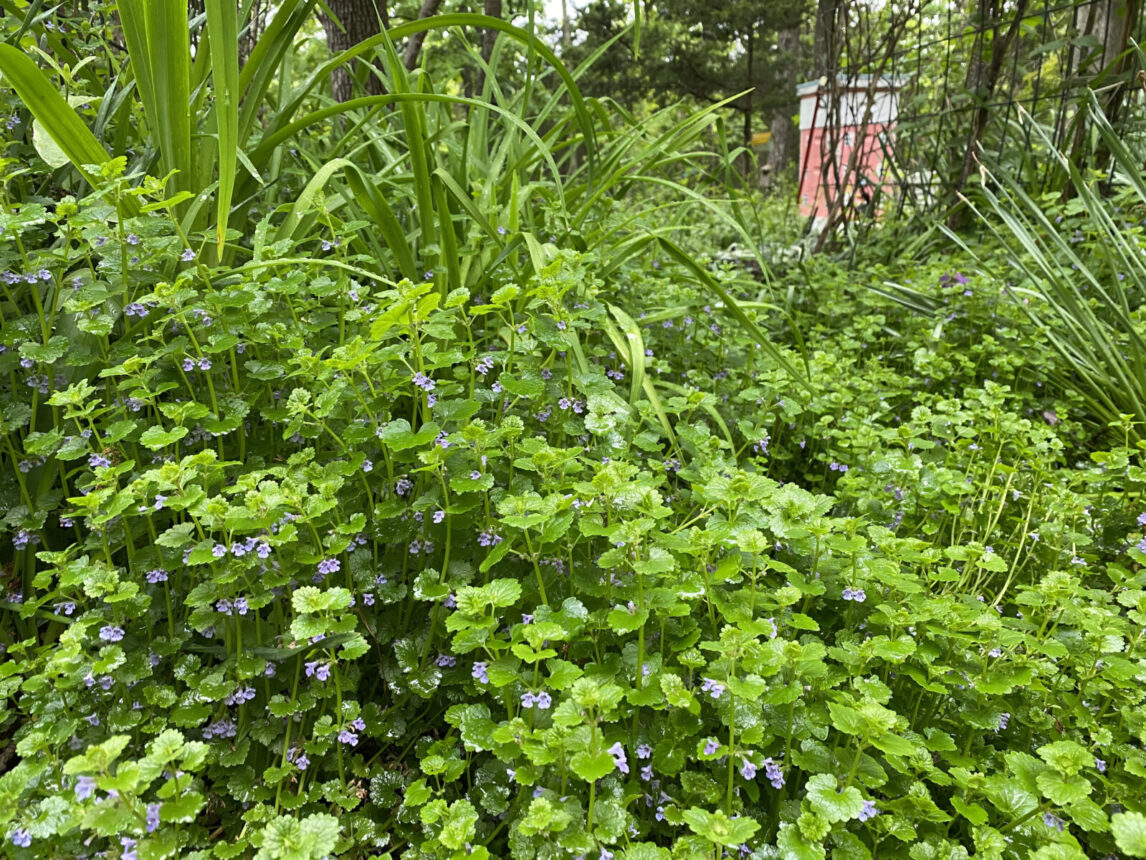Creeping Charlie
Identifying and Controlling Creeping Charlie in Your Lawn
Creeping Charlie, also known as ground ivy (Glechoma hederacea), is a fast-spreading, invasive weed that can quickly take over Minnesota lawns. Recognizable by its rounded, scalloped leaves and small purple flowers, Creeping Charlie thrives in moist, shaded areas but can spread rapidly across sunny lawns as well. Left unchecked, this aggressive weed forms dense mats that choke out desirable grasses and plants, making lawn care and maintenance challenging for homeowners.
At Adams Pest Control, we specialize in identifying and controlling Creeping Charlie infestations. Our experienced lawn care technicians carefully inspect your property to locate the affected areas and determine the severity of the invasion. Early identification is key to preventing Creeping Charlie from spreading and damaging your turf.
Controlling Creeping Charlie requires a targeted approach. Simple mowing or pulling often fails, as the plant’s creeping stems (stolons) root easily at the nodes. Our lawn care experts utilize proven, professional-grade herbicides specifically formulated to eliminate Creeping Charlie without harming your lawn’s healthy grass. We also provide customized treatment plans, which may include multiple applications to fully eradicate the weed and prevent regrowth.
In addition to targeted treatments, we help you strengthen your lawn through proper fertilization, aeration, and mowing techniques, creating a thick, healthy turf that naturally resists future weed invasions. Healthy lawns are your best defense against Creeping Charlie and other invasive weeds.
If you’ve noticed Creeping Charlie taking over your lawn, don’t wait for it to spread further. Contact Adams Pest Control for expert lawn care services and effective Creeping Charlie control solutions in Minnesota. Let us help you restore your lawn’s beauty and keep it healthy year-round.
What Is Creeping Charlie? Identification, Spread, and Health Risks
Creeping Charlie (ground ivy) is an invasive, aromatic, evergreen creeper. It is a perennial of the mint (Lamiaceae) family and thrives in moist, shady areas, but it will also tolerate some sun. The variety of ways Creeping Charlie can spread makes it especially hard to kill. It spreads by seeding and rooting at the nodes that stud its vine which means it can be spread by mowing. Also, it can spread by leaving just a small fragment of rhizome behind resulting in the birth of more Creeping Charlie. Humans, dogs, cats, and other animals can get sick from eating large amounts of Creeping Charlie.

Creeping Charlie Identification, Growth Habits, and Effective Treatment Options
Creeping Charlie Foliage:
Creeping Charlie leaves vary from dark green to purple with a square stem that can be a few inches to two feet in length. Creeping Charlie will develop bright, shiny green, round or kidney-shaped leaves. The leaves are broadly cordate with scalloped margins and sometimes look like they are tinted purple (especially the underside). The surface of the leaves have sparse, short hairs and the leaves pair up on square stems that root at the nodes. These nodes can form roots if they touch the soil.
Creeping Charlie Flowers:
Creeping Charlie has funnel-shaped flowers with a bluish-purple color and spreads to form a dense mat on the ground. Depending on location, these small flowers, approximately 0.4” in diameter, can be seen as early as March. The flowers of creeping Charlie typically grow in clusters of three in the axils and they are two-lipped. The flowers have five petals that are fused into a cup or tube.
Creeping Charlie Roots:
Creeping Charlie easily spreads by seeds, rhizomes, and creeping stems that root at the nodes. If no other plants or weeds are around, creeping Charlie spreads even faster. Creeping Charlie is a perennial that aggressively takes over ground cover. The root system of creeping Charlie is prolific and fibrous.
Treatment for Creeping Charlie:
Often the best way to control Creeping Charlie is by using a post-emergence broadleaf herbicide when temperatures are in the mid 60s to low 80s. Apply the herbicide when there is no rain and light or no wind in the forecast for the next 24 hours following application. Applying the herbicide in mid to late autumn after the first frost also can be particularly effective. Creeping Charlie will draw nutrients from their leaves and roots for winter storage. The result is often better control in autumn because herbicides are more effectively moved into the roots. If needed, a second application can be applied. In the spring, one or two herbicide applications should be timed to when creeping Charlie blooms (usually between April and June).
Talk to an Adam’s Healthy Lawn Expert!
